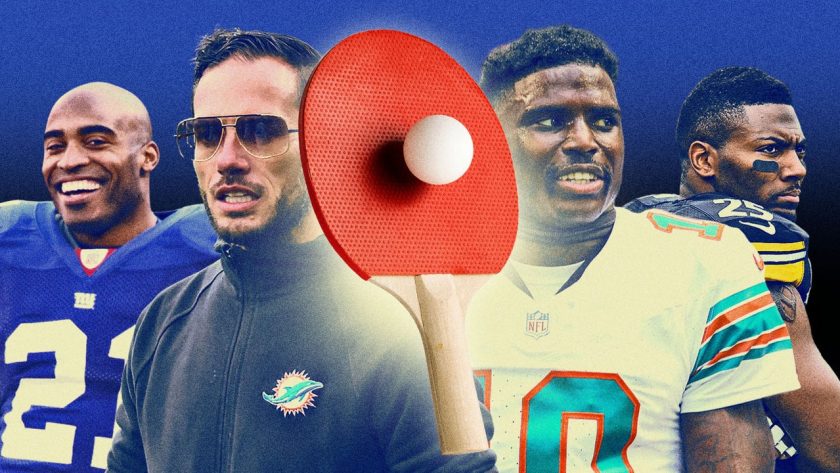Last year, newly hired Dolphins head coach Mike McDaniel began his tenure in Miami by wheeling a ping-pong table into the locker room. He followed Brian Flores, a Bill Belichick-trained disciplinarian, into the job, and he felt the table would improve camaraderie, lighten the seriousness of grueling training camp practices, and provide players with another competitive outlet. The plan initially worked: the Dolphins began the season 3-0 and teammates bonded around their new activity. But after a two-game skid, wide receiver Tyreek Hill exercised his leadership and removed the table—quietly indicating, perhaps, that the team was lacking proper focus.
“They, collectively, as a group of players, wanted more time investment during the week on their jobs for Sunday,” McDaniel said after being informed of the news. “So instead of just saying it, they did something about it.”
X content
This content can also be viewed on the site it originates from.
McDaniel, it turned out, had been a bit naive. The next day, Hill admitted to reporters that the table’s removal wasn’t a power play—he just wanted to purchase a nicer one, with Dolphins decals. But when Miami skidded again, losing five consecutive games throughout December, McDaniel didn’t wait for his captains to pull a similar stunt. With a playoff berth on the line against the Jets in Week 18, he removed the table himself ahead of practices. That Sunday, the Dolphins broke their losing spell. “(Mike) is always looking for some competitive advantage,” Miami left tackle Terron Armstead tells me. “It’s definitely that sacrificial piece that coaches like to use.”
This was the latest instance of time-tested NFL trend: coaches using (or eliminating) ping-pong as an extension of their team-building philosophy. Over the last two decades, there has been no shortage of these kinds of stories: You can read about ping-pong fights in Pittsburgh, Seattle, Atlanta, Buffalo, Jacksonville, New Orleans, Tampa Bay, and Washington, to name just several. Each season, at least one new coaching staff will bring in paddles and white plastic balls (often in addition to diversions like video games, cornhole, or even golf simulators) to promote better chemistry and leisure—until or unless the team starts losing, in which case ping-pong quickly becomes the culprit for a lax approach in preparation and must be removed.
“If your team is solid, and you’ve got a handful of strong leaders in the locker room that can snap the team into focus, then you can probably get away with having some of these extracurriculars,” says former running back Tiki Barber. “But if your team is young and kind of unruly, and there’s discipline issues and accountability issues, then it’s just another distraction.”



